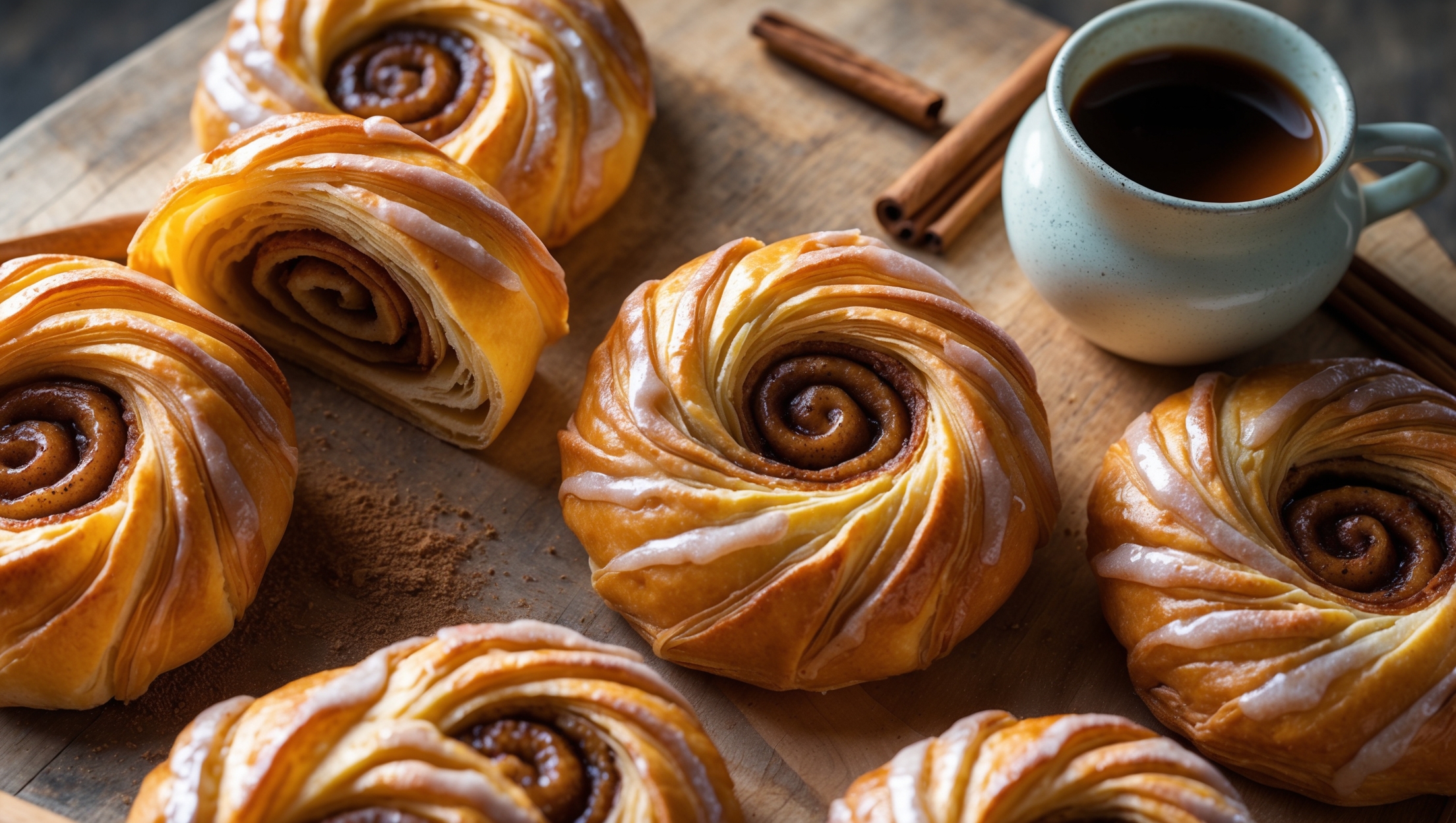Cinnamon Danish Recipe

Ingredients
Equipment
Directions
FAQs
Find answers to your most pressing questions about this delicious recipe right here.
The key ingredients include all-purpose flour, yeast, milk, egg, unsalted butter (for lamination), brown sugar, cinnamon, and powdered sugar for the glaze. The butter is particularly important for creating those signature flaky layers.
Learn how to cook Cinnamon Danish Recipe by mastering the lamination technique - folding butter into dough repeatedly to create flaky layers. The process involves making a yeasted dough, creating a butter block, performing three "turns" with chilling between each, filling with cinnamon sugar, shaping, and baking until golden brown.
Properly laminated Danish pastry dough will have a smooth surface with visible butter streaks when rolled. When baked, it should puff up significantly and show distinct, separate layers when broken apart. If the layers merge together, the butter likely melted during the folding process.
Keeping the dough cold prevents butter from melting into the dough, which is essential for creating separate flaky layers. If butter melts, it gets absorbed rather than forming distinct sheets between dough layers, resulting in a bread-like texture instead of crisp, airy pastry.
Yes, Danish pastry dough can be prepared up to 3 days in advance and stored tightly wrapped in the refrigerator. You can also freeze the prepared dough for up to a month. This actually improves flavour development and makes the final proofing and baking steps quicker.
Danish Pastry
Try following recommended recipes









